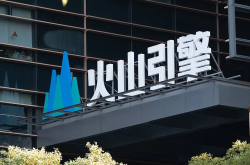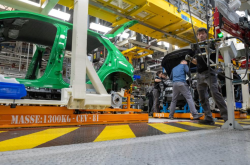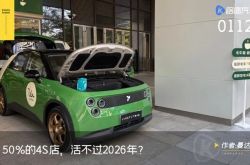Polar Opposites: Breakthroughs and Dilemmas in Consumer Electronics Mid-Year Reports
![]() 09/09 2025
09/09 2025
![]() 637
637
The consumer electronics sector in the second quarter of 2025 presented a scenario of polar opposites. On one hand, giants like Luxshare Precision and Foxconn Industrial Internet reported quarterly net profits exceeding RMB 6 billion and even RMB 12 billion, with year-on-year growth exceeding 20%. On the other hand, nearly 20 companies faced losses, with Appotronics seeing a net profit plunge of 1300%, and smaller players like Yunzhong Technology and Jebang Technology experiencing profit declines exceeding 200%.
Industry differentiation has never been so pronounced. Wind data shows that the total revenue of the consumer electronics sector in the second quarter of 2025 reached RMB 323.105 billion, up 22% year-on-year; net profit attributable to shareholders was RMB 13.125 billion, up 17% year-on-year. However, a closer look reveals that the gross profit margin actually declined by 0.8 percentage points year-on-year to 14.6%.
This indicates that while the industry is recovering overall, the shadow of 'increased revenue but decreased profit' still lingers. Intense competition in the end-market makes cost control and high-end transformation crucial for survival. Amidst this wave of differentiation, why have the fates of companies diverged so sharply? Where will the future lead?
01. Polarization: Survival Game in Industry Reshuffling
The consumer electronics industry is undergoing a brutal reshuffling. Leading companies are performing exceptionally well, with Luxshare Precision reporting a quarterly net profit of RMB 6.644 billion, up 23.1% year-on-year, and Foxconn Industrial Internet reporting RMB 12.113 billion, up 38.6% year-on-year. These giants are leveraging their global production capacity, technological accumulation, and customer advantages to continuously expand their market share.
In stark contrast, over 16 companies are facing losses, with Appotronics seeing a net profit plunge of 1300%, and companies like Jat Tech and Aoni Electronics experiencing profit declines exceeding 200%. This polarization reflects the inevitable transition from inclusive growth to structural growth in the industry.
The differentiation between the Apple supply chain and the Android camp is particularly evident. Canalys data shows that global smartphone shipments in the second quarter reached 289 million units, showing almost zero growth. Apple shipped 44.8 million units, down 2% year-on-year; the Android camp shipped 244 million units, up 0.3% year-on-year.
The Apple supply chain is benefiting from the 'pre-export dividend' due to adjustments in U.S. tariff policies. Companies like Luxshare Precision and Foxconn Industrial Internet have pre-stocked and adjusted their production capacity, with Indian factories gradually taking on North American orders, providing temporary performance support. However, this is a double-edged sword: tariff uncertainties persist, and companies in the supply chain generally face increased order volatility.
The Android camp presents an even harsher differentiation. Tecno Mobile, despite revenue of RMB 29 billion, saw a net profit decline of 57.5%, highlighting the thin profits in emerging markets despite large volumes. Conversely, companies that have achieved breakthroughs in niche markets, such as Aohai Technology in fast charging and Hengmingda in precision structural components, are achieving counter-trend growth through technological positioning.
The survival dilemma for SMEs is even more severe. Loss-making companies in the second quarter generally share three characteristics: high reliance on the single downstream market of mobile phones, significant investment in transformation without yet realizing returns, and insufficient capacity utilization due to volatile overseas orders. Take Jat Tech as an example, with a net profit decline of 55.5%, its main clients being Android phone brands severely affected by industry price wars. Victory Precision, despite revenue of RMB 1.699 billion, saw a net profit plunge of 355.5%, with its transformation into automotive electronics yet to reverse losses. These companies are facing a dilemma of 'transforming to die or not transforming to wait for death.' The industry reshuffling is accelerating, and SMEs lacking technological barriers and ecological niches may be forced out of the market.
02. Future Pathways: Dual Drivers of Technological Upgrading and Globalization Layout
Faced with intensifying industry differentiation, how can consumer electronics companies break through? Technological upgrading and globalization layout have emerged as key pathways. IDC predicts that the global smartphone market will grow by only 2.3% in 2025, with a clear ceiling. To sustain growth, consumer electronics companies must expand product boundaries, enhance technological content, and accelerate globalization.
AI-driven IoT devices have become the biggest bright spot. Anker Innovations reported revenue of RMB 12.867 billion, up 33.3% year-on-year, with net profit growth maintaining at 33.8%. Its wireless audio and smart home products continue to sell well on overseas e-commerce platforms, validating the effectiveness of the 'product innovation + brand globalization' logic.
Another pathway is AI computing hardware. While not all consumer electronics companies can enter the server and switch markets, companies like Aohai Technology and LY ITECH have achieved performance improvements by entering niche segments such as data center power supplies and cooling modules. LY ITECH reported Q2 revenue of RMB 12.13 billion, with significant scale effects despite a low net profit margin. These cases demonstrate that transitioning from labor-intensive to technology- and capital-intensive models is a necessary path for Chinese consumer electronics companies.
Technological upgrading is key to improving gross profit margins. Foxconn Industrial Internet continues to enhance technological integration in cloud computing servers and AI module manufacturing, with overall server revenue growing by over 50% in the second quarter, cloud service provider server revenue up over 150% year-on-year, and AI server revenue up over 60% year-on-year. The industry-focused GB200 series products have achieved mass production ramp-up, with yield rates continuously improving and shipments increasing quarterly. Goertek, despite a 7% year-on-year revenue decline, reported a net profit of RMB 1.417 billion, up 15.7% year-on-year, with its VR/AR business gradually recovering and new product cycles from North American clients bringing fresh expectations. In niche component segments like acoustics, optics, and batteries, Chinese companies are also accelerating import substitution. This indicates that only through technological innovation to enhance added value can companies escape the price war quagmire.
Globalization layout is a necessary measure to mitigate risks. Adjustments in U.S. tariff policies have led to supply chain reconfiguration, with India and Southeast Asia emerging as new manufacturing centers. Foxconn Industrial Internet's Indian factory now accounts for over 20% of capacity, and Luxshare Precision's Vietnamese base has started mass production of TWS earphones. This 'China + 1' layout strategy brings proximity to emerging markets. Meanwhile, companies need to strengthen localized operational capabilities. Tecno Mobile's success in Africa relies not only on cost-effectiveness but also on in-depth local channel construction and after-sales service improvement. In the future, competition among consumer electronics companies will be a comprehensive test of global operational capabilities.
The industry is undergoing a transformation from quantitative to qualitative growth. Companies that can seize AIoT opportunities, sustain technological innovation, and achieve global operations will emerge victorious in the new round of industry reshuffling. For those still reliant on single clients and low-value-added products, time is running out. The feast in the consumer electronics industry is not over; it's just that a new set of guests has taken their seats.
- End -






